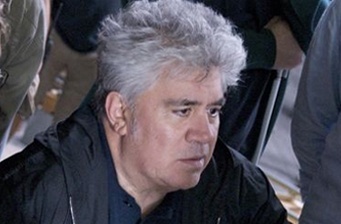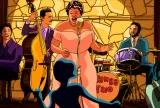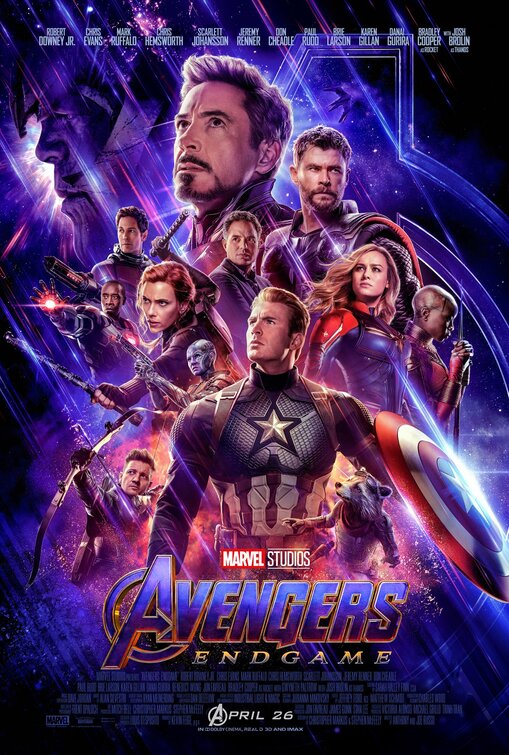News Headlines
The Top 3 Latino Films of 2023
01.5.2024My Top Films of 2022 on PIX 11 News
12.20.2022West Side Story (Movie Review)
12.2.202103.20.2009 | By Mack Chico |

Variety’s review of Pedro Almodovar’s Broken Embraces:
Partly a film about films and partly a film about love, Pedro Almodovar’s “Broken Embraces” can’t quite decide where its allegiances lie. A restless, rangy and frankly enjoyable genre-juggler that combines melodrama, comedy and more noir-hued darkness than ever before, the pic is held together by the extraordinary force of Almodovar’s cinematic personality. But while its four-way in extremis love story dazzles, it never really catches fire. The Spanish helmer’s biggest-budgeted and longest movie to date will get warm hugs from local auds on release March 18; headed for Cannes in May, it goes out Stateside via Sony Pictures Classics later this year.
There’s a sense here that Almodovar, who’s now a stylistic law unto himself, may be more interested in stretching himself technically than in engaging with issues of the wider world. Card-carrying fans can prepare themselves for a rare treat. But those who hoped the pic would extend the quieter, more personal mood shown in “Volver,” as the 59-year-old helmer moves into the late phase of his career, will be disappointed to find that “Embraces” is made not of flesh and blood, but of celluloid.
Harry Caine (Lluis Homar, “Bad Education”) is a blind screenwriter and former director whose real name, which he abandoned after losing his sight in a car crash, is Mateo Blanco. News arrives of the death of corrupt stockbroker Ernesto Martel (Jose Luis Gomez), who once produced a movie Blanco directed, “Girls and Suitcases.”
Blanco’s former production manager, Judit (Blanca Portillo), who holds a candle for him, seems nervous at the news. And then a pretentious young man calling himself Ray X (Ruben Ochandiano), who turns out to be Martel’s son, asks Blanco to help write a script that’s intended as an act of vengeance against his neglectful father.
The film now flashes back to 1992, when Martel fell for his secretary, a wannabe actress-cum-part-time call girl, Lena (Penelope Cruz). By 1994, he and Lena are an item. However, when Lena auditions for “Girls and Suitcases,” Blanco also falls for her.
Chagrined, Martel gets his son (also Ochandiano, here as a wildly gauche, camp teenager) to spy on Blanco and Lena under the guise of making a docu about the shoot. Watching Martel’s life fall apart, as a lip reader (Lola Duenas) decodes Lena and Blanco’s conversations in the boy’s footage, is hilarious. But any compassion for Martel evaporates in the laughter — one of several moments when the film deliberately undermines a particular mood.
Following a disastrous trip to Ibiza, Martel and Lena break up, and Martel initiates a slow, costly revenge designed to destroy Blanco. Hereon, much of the action takes place amid the volcanic landscapes of Lanzarote, opening things visually even as the drama becomes more and more claustrophobic.
Script moves fluidly back and forth in time, with superb editing by regular Jose Salcedo, and some of the witty, pointed dialogue is among Almodovar’s best. The labyrinthine plot is thick with twists, turns and resonances. But a couple of questions linger — especially that the revelations in the final reel would hardly have remained under wraps for 14 years, given Blanco’s suspicions.
Cruz delivers a compelling, subtle perf as a woman continually aware that the shadow of tragedy hovers over her. But because her character is effectively split into three — Magdalena the grieving daughter, Lena the actress and lover, and Pina in “Girls and Suitcases” — auds will struggle to locate an emotional center behind the thesp’s dizzying range of costumes and wigs.
Homar, who literally wears Almodovar’s own ’90s wardrobe, makes a commanding screen presence as Caine/Blanco, but the character’s reactions to his multiple tragedies (including being blinded) seem stoical to the point of catatonia. Gomez and Portillo are solid in theslightly smaller roles of Martel and Judit, respectively. Multiple cameos — including one by the helmer’s producer brother, Agustin — are enjoyable, though none help move the story forward.
Visually, the pic is an exquisite treat. Every richly hued wall is covered with eye-candy artwork, every doorway reps a second level of framing, and there is beauty even in the scattered contents of a drawer or in a pile of torn-up photos. Closeups are regularly used, particularly of Cruz’s hypnotically photogenic features.
Cinematic references abound. Several scenes featuring dangerous staircases recall Henry Hathaway‘s ’40s noir “Kiss of Death.” Pic’s title alludes to the Pompeii scene in Roberto Rossellini‘s 1954 classic, “Voyage to Italy,” which Lena and Blanco watch in Lanzarote. And the entertaining “Girls and Suitcases” is a clear homage to Almodovar’s 1988 hit, “Women on the Verge of a Nervous Breakdown.” Score by longtime collaborator Alberto Iglesias superbly evokes the moods and movies “Embraces” is so in thrall to.
- (Co) Canal Plus
Filmography, Year, Role
- (Co) Canal Plus
Filmography, Year, Role
- (Film) Volver
Hector Alterio, David Lipszyc
- (Film) Volver
2006 – Penélope Cruz, Pedro Almodovar
- (Film) Kiss of Death
- (Tv) In the Arms of a Killer
- (Person) Alberto Iglesias
Composer, Music, Music Conductor
- (Person) Alberto Iglesias
Camera (color, widescreen), Rodrigo Prieto; editor, Jose Salcedo; music, Alberto Iglesias; art director, Antxon Gomez, sound (Dolby Digital), Miguel Rejas. Reviewed at Kinepolis, Madrid, March 13, 2009. Running time: 128 MIN.







































